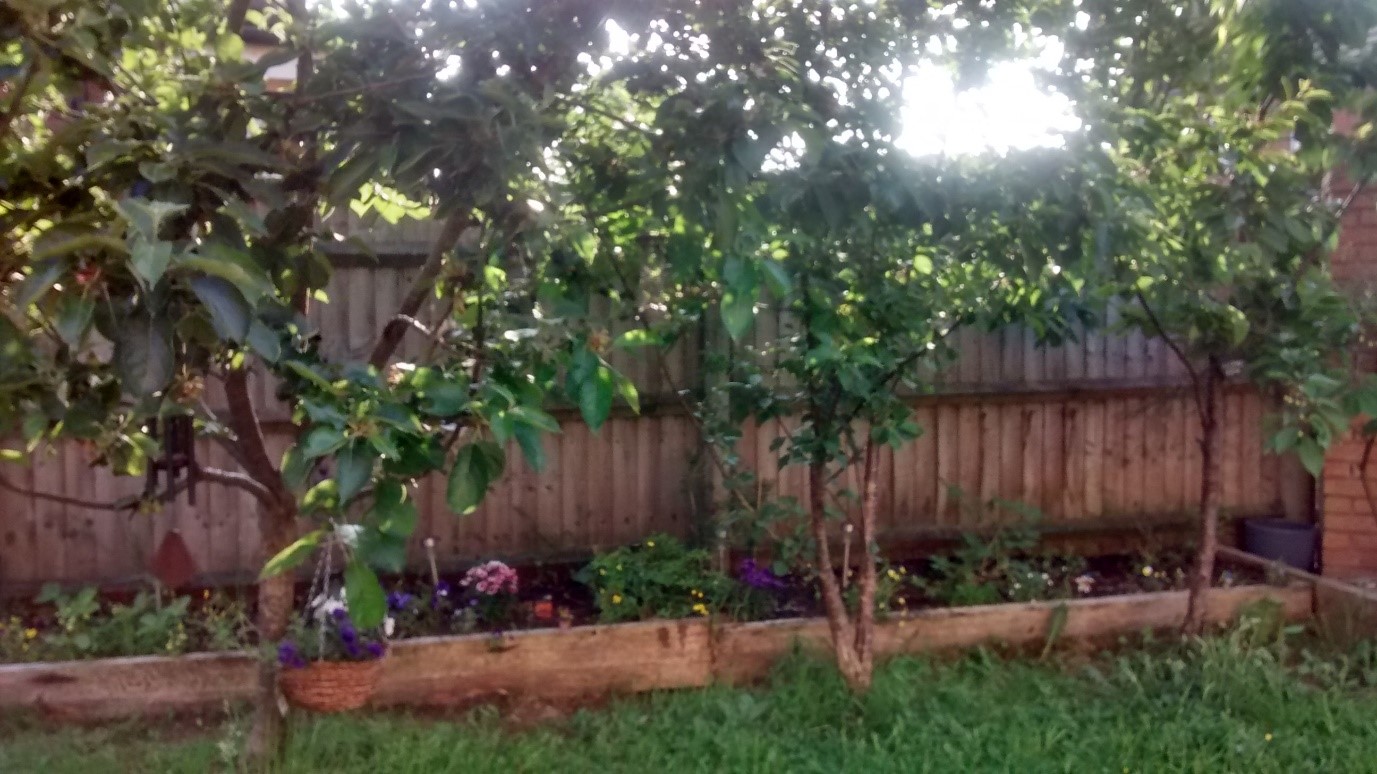I recently inherited a small garden to work with; it presented a slight conundrum. For one thing, it was a bit late in spring for heroic amounts of germination and bringing plants on, and for another, there are limitations on the amenity use of the garden. The largest parcel of land is the lawn and (regrettably) must remain so to service a role for testing tents and camping equipment. Additional to this, there are three medium-sized trees at the edge of the garden and sitting right above the flower border. The rest of the garden (borders, fences, and any surface in sight) is fair game. So, let the gardening commence!
The main aims of the garden, I reasoned, should be to compensate for the reduction in biodiversity a lawn imposes. So I am looking to attract many bees, birds, moths, butterflies, etc. by encouraging as many colourful and perfumed plants as I can. As the garden is quite close to a natural piece of woodland, I also feel there should be some continuity between the species, aiming for a “semi-natural” appearance rather than going off the deep end with exotics and oddities.
Build it, and they shall come! Last week’s esteemed visitor was a Lime Hawk Moth.
Image by Dr. A. Patterson.
Given the constraints of space, the possibility of growing any significant amount of food is off the cards for this venture. Cats have littered the borders, and slug pellets have been used extensively in the past, so the risk of contamination precludes significant amounts of food plants. That said, there is always the chance to grow some cheeky lettuce in plant pockets.
The basic structure within which defines the border area. Image by Dr. A. Patterson
As you can see, the trees lead the way in this garden. And that way is UPWARDS! In such a small space with an abundance of sides, edges, fences and walls, utilising verticality in a growing design is essential. That should include:
1. Pot plants arranged in tiers, from the lawn layer, up to small trees and bushes.
2. Using ledges and surfaces as much as possible for ‘lone’ pot plants.
3. Using hanging baskets, hanging buckets, and pocket planters
4. Making maximum vertical use of a mini greenhouse.
5. Using garden netting against the fence for climbers.
6. Arranging plants in the borders in a tiered polyculture to capture light.
The complication of the border sitting right under the tree presents three significant complications;
1. Less water available due to leaf cover and root losses
2. Less light available due to shading
3. Excess of organic matter being shed into the border, including leaf matter, blossom, seedlings, etc.
In short, siting a border under trees so closely is a bad idea, and it is rarely seen in nature for the above reasons. As a result of this, (plus the addition of cat litter), the border needs to be quite intensively managed and looked after, particularly if bringing on germinating seedlings.
In this case, the design has led to an overgrowth of slugs and snails, which needed to be controlled by organic slug and snail repellent. Actually, this did the trick pretty well.
Designing for verticality: In this design, the canopy layer lies in reverse to the rest of the herbaceous layers.
Provided the canopy is open enough with good sunshine; this is possible.
|
Layer |
Contains |
|
1 |
Climbers: clematis; passionflower; sweetpeas; hollyhocks; honeysuckle |
|
2 |
Umbellifers: parsley; fenugreek; fennel; sweet cicely; coriander |
|
3 |
Tall ornamentals; poppies, echinacea; |
|
4 |
Native herbs; borage; lemon balm; sage; oregano; |
|
5 |
Ornamental flowers; nemesia; asters; petunias; bleeding hearts |
|
6 |
Ground layer; strawberries; pansies; clover; thyme |
|
7 |
Established trees; apple; cherries |
I also have plans to make three troughs out of repurposed wooden pallets and site them by the small pond and at the far end of the garden. In these, I will plant Comfrey, Marshmallow, and (in autumn time for next year) Mullein. All of these are large native architectural plants which will attract wildlife and provide some foliage and pretty flowers (a) to cover up fences and (b) to promote the feeling of every vertical space being used within the garden. The plants will be in troughs so as not to damage the mulch mat which underlies the far borders.
Having planted up and as I watch the plants grow, we shall see how this garden design develops throughout the year. While many of the aims of the floral wildlife garden can be achieved in one season, it is next year when the design will settle down, and gaps can be plugged. If you are interested in horticulture for personal or professional reasons, ADL has a variety of courses suited to your needs. Please check out the website to see how high you can grow!






